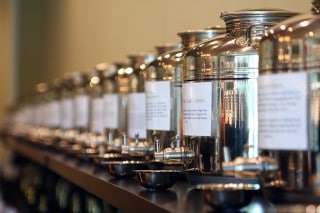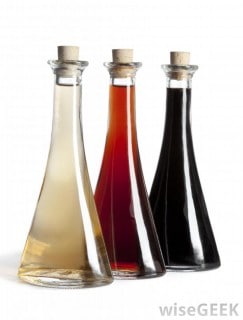We get some great questions at the Leaning Ladder! We love educating our customers on our olive oils, vinegars and merchandise. Below are some of the most popular questions we have received at the store.
Q: What are other uses for olive oil besides salad dressings?
A: Of course, olive oil is great for salad dressings, but there are many uses for this versatile and healthy oil
- Frying — olive oil has a high smoking point (410 Fahrenheit), which is higher than the ideal frying temperature of 350 Fahrenheit. Olive oil keeps its nutritional value better than other frying oils.
- Beauty and household products — check out our recent blog that lists ten unique ways to use olive oil
- Finishing oil — try finishing off your braised meats, stews and soups with a drizzle of extra virgin olive oil or an infused olive oil. The burst of fruitiness does amazing things to these types of dishes
- Use for health benefits — ingesting two tablespoons daily may reduce your risk for coronary heart disease
- Can be substituted for higher saturated fats such as butter in cooking and baking
Q: What are those large metal containers throughout the store?

Leaning Ladder Premium Extra Virgin Olive Oils
A: Those metal containers throughout our store are called FUSTIs — a stainless steel container for housing our olive oils and vinegars. With a spigot on each one, customers can try individual flavors or mix them to find the perfect combination. We fill all of our bottles from the FUSTIs, cork the bottle and heat seal the top. The FUSTIs and spigots are routinely cleaned and sanitized.
Q: What is the difference between white and dark balsamic vinegar?
A: Dark balsamic vinegar is considered the “real” balsamic. Each is created differently and aged for different lengths of time. Dark balsamic is made by simmers grape pressings for hours until thick and caramelized. They are then stored in charred barrels for a minimum of 12 years (to be considered authentic balsamic). White balsamic vinegar is made from white grape pressings and is blended with other vinegars. The cooking time is significantly less to prevent any coloring of the mixture and stored in stainless steel or oak containers. The two taste similar but dark tends to be sweeter and more syrupy. The white tends to have a cleaner aftertaste. The reason to use white over dark is primarily an aesthetic one. Many cooks and chefs will use the white balsamic with lighter colored foods, dressings and sauces without causing any discoloring.

White and dark balsamic vinegars
Visit us today, and keep the questions coming! We are here to help!
Your friends,
Susan and Bridget

0 Comments